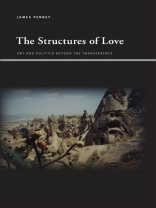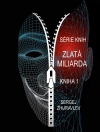Both Freud and Lacan defined the transference as the ego’s last stand—its final desperate attempt to keep the truth of the unconscious at bay. Both also viewed the transference as a social phenomenon.
In
The Structures of Love James Penney argues that transference is the concept with which psychoanalysis thinks through the unconscious demands that circumscribe and can sabotage our creative initiatives in the arts and politics. Penney suggests a method of cultural analysis that enables us to identity the transformative potential of genuine artistic and political acts. He stages a dialogue between Lacan’s psychoanalysis and the philosophy of Alain Badiou; includes chapters on Frantz Fanon and Jean Genet, Chantal Akerman and Lucien Freud; and explores the aesthetic, political, and ethical consequences of the transference idea, pushing it into exciting new territory.
Содержание
List of Illustrations
Acknowledgments
Preface
1. The Refusal of Love
Love in the Social
The Technique of Love
Resisting the Transference
Woman and the Riff-Raff
The Fall of the Other
From Partial Love to Anxiety
2. Socrates, Analyst
An Original Transference
Of Love Spheres and Stranded Vessels
A Pregnant Beauty
The Part of Love
Love, Ménage à Trois
3. Like a Pack of Rats
Will the Real Frantz Fanon Please Stand Up?
A Gift of Quinine
The Metropolitan View
The Pack of Rats
4. Loving the Terrorist
Massacre and Subjectivation
A Century of Violence
A Begging Bowl Made of Flesh
Of Grey Hair and Treachery
5. For the Love of Cinema
Imaginary Signifiers?
Species of Identification
Beyond the Phenomenon of Cinema
Proustian Obsession and the Failure of Spectatorship
6. Naked Love
Bodies of Theory
Painting in Nature
Nude and Naked
Tableau and Screen
Shameful Nudes
The Object of Art
Notes
Index
Об авторе
James Penney is Associate Professor of Cultural Studies at Trent University. He is the author of
The World of Perversion: Psychoanalysis and the Impossible Absolute of Desire, also published by SUNY Press.












